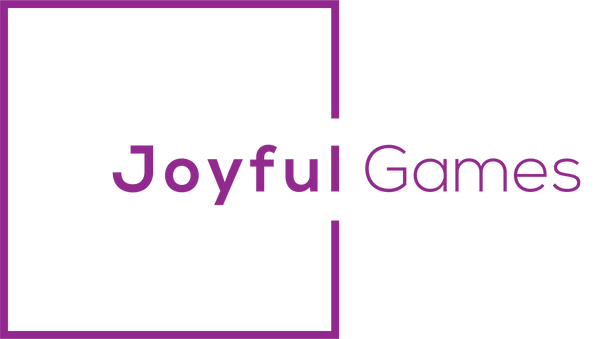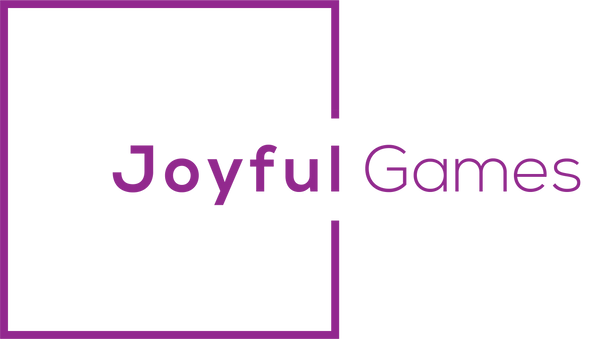We live in a fast-paced and divisive period of history, which is strongly impacted by new technologies. The latest addition is the use of AI tools, so in this article, I wanted to express my opinions on using AI-generated illustrations in the board game creation process.
As a prelude and disclosure to this article - I am Edward, and recently, I launched a fantasy card game. When creating this game, I used AI art tools like Midjourney, so of course, at the very least, I am a bit biased, but in this article, I will try to express my opinion as reasonably and unbiased as I can.
For those wondering, except for a bit of help from grammar-checking tools, no AI tools were used to help write this article. So, it is entirely written by me. The cover image of the article was created by combining two stock pictures and editing them with Photoshop.
A few notes, so you know what you will find (and not find) in this article:
The article focuses on visual AI tools, not written AI tools in board game design.
The article looks at using these tools for small companies, not for big corporations.
- This article is an opinion piece meant to express my personal views on this matter, so feel free to agree, disagree, or add your thoughts in the comments.
So, let's dive in and find out if using AI in board game design – is it good or bad!
The Emergence of AI and The Timing of Using AI Tools Right Now
I am writing this article in September 2023, so one of the current big things happening in the world (well, it is mainly happening in Hollywood, but it impacts many parts of the world) is the writer's strike. There are multiple layers of the strike, but one of the topics is the use of AI in the creative process. So, it is a hot topic right now.
There is a lot more going on, and I won't pretend I know the ins and outs of it, but in a nutshell, besides a higher pay, the writers want to regulate the use of AI, for the most part demanding attribution to their original work, and regulating that AI could complement the writer's work, not substitute it, which is absolutely fair, in my opinion.
As important as this topic is, it is a topic generally aimed (and should be aimed) at big and large corporations, not the small publishers and one-man (woman) shows.
AI in The Hands of The "Goliath" or "David"
As discussed, it is one thing to talk about AI in the context of big corporations, but it is not the same as when you talk about indie publishers and sole creators. Those are vastly different things.
Therefore, in this article, I will be focusing my arguments revolving around the small guy who does not have vast resources (financially, creatively, and marketing-vise) because putting the small guy and big guy in the same basket would not only miss the point, but do harm - to the small guys, and artists who work for the big companies.
The Practical Pros and Cons of Using AI in Board Game Design
First, let's look at the generally accepted practical arguments for and against using AI images in board game design. By practical, I mean - not ethical aspects. Ethical reasons are a different story; I will get to them later.
Practical Cons of Using AI in Board Game Design:
- Unreliable. Yes, AI can make stunning single images, but when making a board game design, it must fit a theme. The illustrations cannot be created in multiple different styles. Otherwise, it will be a crappy game. This is particularly true with characters. AI is challenging in this sense because it is nearly impossible to provide AI with precise styling, so work with AI is mostly trial and error with thousands of images until you get a quality result. A good artist, in contrast, will find their style and continue without issues.
- Difficult to Edit Details. If you have used AI image tools, you know that they will generate a set of 1-4 images based on your prompt. Sometimes, it will generate an image that is spot-on for what you want. In many cases, it will generate an image that is 90% of what you intended, but the other 10% will simply ruin it. In the case of an artist, you can ask to revise; usually, it is a simple task for the artist. But in the case of AI - sometimes it is an impossible ask.
- Lack of Personal Touch. This slips into the subjectivity realm but is still worth mentioning. Indeed, AI is not human (duh), so it will lack a human touch. Then again, this is true for single images, not when talking about many images combined into a whole package (i.e., a finished game).
- Has a Learning Curve. Yes, AI is accessible to most people, and it has been simplified over time, but it still requires time to master it sufficiently to create something worthwhile. And it takes time (sometimes a LOT of time) to find the style that matches the style and theme of the game.
Practical Pros of Using AI in Board Game Design:
- Convenient, accessible & cheap. AI tools nowadays can be used by almost everyone. Of course, the results are far from guaranteed, but overall, AI tools are almost always more accessible than using a real artist and will almost always be cheaper. This is probably the biggest reason small creators would consider using AI tools in their game-creation process.
- Fast or very fast. When talking about a single image vs. a single artist - AI will be quicker than a human 99.99% of the time. Time is always of great importance, especially if you are a sole creator or working with a very small team. Of course, fast does not necessarily mean good, but if we strictly speak about time, then AI is definitely faster.
- Imagination inducing. AI can be a good starting point if you don't know where to start. From creating visual maps to color palettes to imagined set pieces - AI can help you find the right style. So, AI can provide guidance, and it "could" generate something you love. But again, it is not guaranteed.
- It provides an opportunity that would not be possible otherwise. This is a bit of a mix of the first three points, but for the small guys, resources are extremely limited - either when you talk about finances, accessibility to artists, marketing power, or so much more. Creating a good quality card or board game is challenging - it needs rules, art, style, testing, and, of course, the printing itself. So, AI tools can provide a way of making such a game, which otherwise would not be possible.
As you can see - from a practical standpoint, using AI has notable benefits but still requires a learning curve; it cannot sustain a particular style/theme well; sometimes, it takes a lot of time to master. So, yes, it can be faster, easier, and cheaper, but it is not as one-sided as many would consider.
From my personal experience, I can admit that it took more than six months until I got the style and illustrations to fit the theme I was going for. Surely, there are better AI-wizards out there, but you still need to put in a lot of effort and hours to get great results.
The Ethical Considerations of Using AI in Board Game Design
Now, let's look at the ethical side of things. This is where it becomes tricky. Then again, ethics are a multilayered aspect in many fields, so AI is not special in this department.
In short, when it comes to ethics in using AI, it is inevitable to be ethical for some people and unethical for another group of people.
Especially predominant are these two arguments:
1) The "artists will lose their jobs" argument and
2) The AI is stealing artists' work argument.
Let's look at both of them!
Will AI substitute artists?
While there is truth in that, it is not the whole truth. This argument is way more simplified than it should be.
While it is true that new technologies steal some jobs, these technologies also invent new jobs and transform old ones.
Again, remember that in this article, we are talking about small companies, so in this case, the small company most likely would not be able to hire an artist in the first place, so no job is lost. In some cases, an artist can combine their artistic skills with AI and create some whole product of their own – therefore, having benefits for themselves!
Does AI steal from artists'?
It is true that AI models train themselves on the art and photos that are available on the internet - so, yes, AI is using the work of other artists. But is this stealing? In my opinion, this is a philosophical question with many layers, but in short, I don't think it is stealing.
Why do I think that? Well, to summarise, it all comes down to two things:
1) How do other artists train themselves? Because they don't come up with their original works in a vacuum - they are also inspired by other artists. So, how does this differ from AI? The mechanics might be different, but the fundamentals are the same.
2) Intent. All in all, it all comes down to intent. AI does not think or want something. The human behind the keyboard intends to do something. The goal can be to create something original, or it can be to make a copy of something. And AI is not the only one with the ability to copy or steal - humans can do it without it.
So, in my opinion, using AI is neither ethical nor unethical. It just is something that is simply happening and will be happening. It is something that needs to be embraced.
On that note, I believe that AI tools need to be regulated. Although AI tools are neither ethical nor unethical, there can be harmful use cases and malintent when using them, which need to be regulated.
Final thoughts: Philosophical and pragmatic argument for using AI in Board Games
On a final note, let's look at all this with an eye of pragmatism and a bit of speculation.
The most likely possibility is that AI tools are here to stay and will become only better and more powerful, so the most pragmatic decision is to embrace the change, not fight it.
In the best interests of most – artists, small businesses, and even corporations is that the use of such tools is smartly regulated because, yes, AI art comes with its risks.
The bottom line is to create something worthwhile; you need the "driver behind the wheel" – the person who is creating something for someone. That requires intent, vision, and the ability to steer the AI in the necessary direction. So, while it is not the same as "regular" art, it still is IS art.
Related articles:
- The Future of Board Gaming: Predictions and Emerging Trends
- What Makes a Good Card Game - Great?


